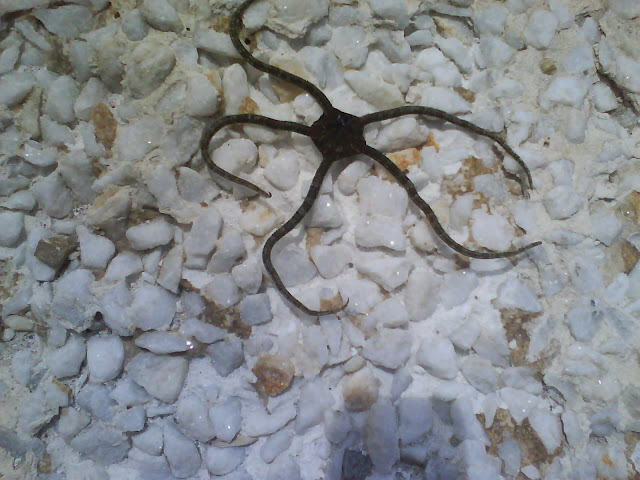I learned about Oliver the chimpanzee after answering another question and I developed a kind of sympathy towards his story.
The
abstract of my answer is that Oliver was a common chimpanzee that had
retained some juvenile characteristics in his face that made him appear
more 'human-like' and a preference for walking upright that he could
have developed as a juvenile growing with his first owners, a couple
that bought him when he was about two y.o. The most peculiar trait he
shoed was how upright he could walk, but this type -although very
excepcional- of gait has been found in some other apes like the gorilla
of the video I have added. And finally, some years of abuse resulted in
muscle atrophy and loss of all teeth wich contributed to making his
appeareance more slender and his face more plane.
Oliver
was famed as a chimpanzee with many human like traits, but in fact many
studies carried out after his death showed clearly that he was a common
chimpanzee without chromosomic anomalies.
A geneticist from the University of Chicago examined Oliver's chromosomes in 1996 and revealed that Oliver had forty-eight chromosomes instead of forty-seven. This disproved the earlier claim that he did not have a normal chromosome count for a chimpanzee.Oliver's cranial morphology, ear shape, freckles and baldness fall within the range of variability exhibited by the Common Chimpanzee.Scientists performed further studies with Oliver, the results of which were published in the American Journal of Physical Anthropology.However a full DNA test has never been performed. Although many requests were made for access to Oliver for medical testing during his later years at Primarily Primates and again after his death in 2012, it was the policy of PP to refuse all such requests, calling those inquiries "scientific tourism."
Judging
by the pictures I have seen he looked like if he had retained some
juvenile characters like a somehow flatter face (aslthough that the
effect was stressed by the fact that many of the photographs were taken
when he was old and had his teeth removed), bald and without beard. He
also had a tendence for walking upright, strinkingly upright, and
rarely was seen knucling. He was a well developed male in spite of the
juvenile traits in his appeareance. Also, reading his biography -it is
very interesting- it results that Oliver was purchased by a Pensilvannia
laboratory when he was about 30 years old, and that he spent nine years
in a small cage what resulted in his muscles atrophying, which could
give him the slender look he exhibits in the pics, apart from horrible
mental and phisycal suffering. Oliver, with all his fame, was an abused
chimp, and I congratulate that people of Primarly Primates finally took
care of him and decided to maintain scientific analysis far from him for
the rest of his life:
Oliver was purchased in 1989 by the Buckshire Corporation, a Pennsylvania laboratory leasing out animals for scientific and cosmetic testing. His entrance examination revealed some previous rough handling. He was never used in experiments, but for the next nine years, his home was a small cage, whose restricted size resulted in muscular atrophy to the point that Oliver's limbs trembled.In 1996, Sharon Hursh, president of the Buckshire Corporation, after being petitioned by Primarily Primates, allowed his retirement to Buckshire's colony of 13 chimpanzees.
So, accordingly to the studies carried out, and in absence of a genetic
study, it seems that Oliver was a common chimpanzee whose 'human-like'
traits had been highly hyped by his owners who had exhibited him.
The
peculiar -for a chimp- way of walking is also not unheared of in some
few other non human apes (very few), like the gorilla of this video:








